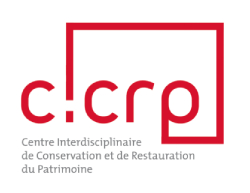Degradation of lead paints
Programme start: 2000
CICRP: Jean-Marc Vallet
For several years the CICRP has been conducting research on the chromatic modifications affecting lead-based paints, particularly their darkening and the role of the environment in such degradation. Also based on experimental work, particularly with samples artificially aged under different conditions (temperature, humidity, UV), these efforts have confirmed that minium (red lead) transforms into a black lead dioxide (plattnerite) in slightly acidic conditions, and that one of the principal factors behind the darkening of this orange mineral is its method of fabrication. For example, the technique employed for heating white lead leads to the formation depending on temperature of crystalline substances of different colours (yellow, like litharge and massicot; and orange, like minium). This thermal reaction is often imperfect, as it is stopped while impurities such as litharge remain. These impurities are much more sensitive to deterioration than minium and easily transform into plattnerite. The work carried out has also shown that irradiation of the surface with a laser emitting near infrared radiation in continuous mode results in the reconversion of the darkening to minium, with benefits in terms of the stability of the phases formed.

Darkening of white lead
(Monastery of Saorge; photo J.-M. Vallet)
The latest efforts have focused on the darkening of white lead, composed of lead carbonates. The first efforts were carried out on samples artificially aged in an environmental weathering chamber and on samples from the Franciscan monastery of Saorge (06). The aim is to gain an understanding of the role of organic binders in the darkening process.
Publications:
There have been many publications (in the journals European Journal of Mineralogy, Phase transition, l’Actualité Chimique and Technè, as well as in congresses (ICOM-CC, LACONA, RIPAM, PNRCC and SFIIC).
These efforts have formed the topic of a doctoral study, a post-doctoral study and four professional and research Masters.)


